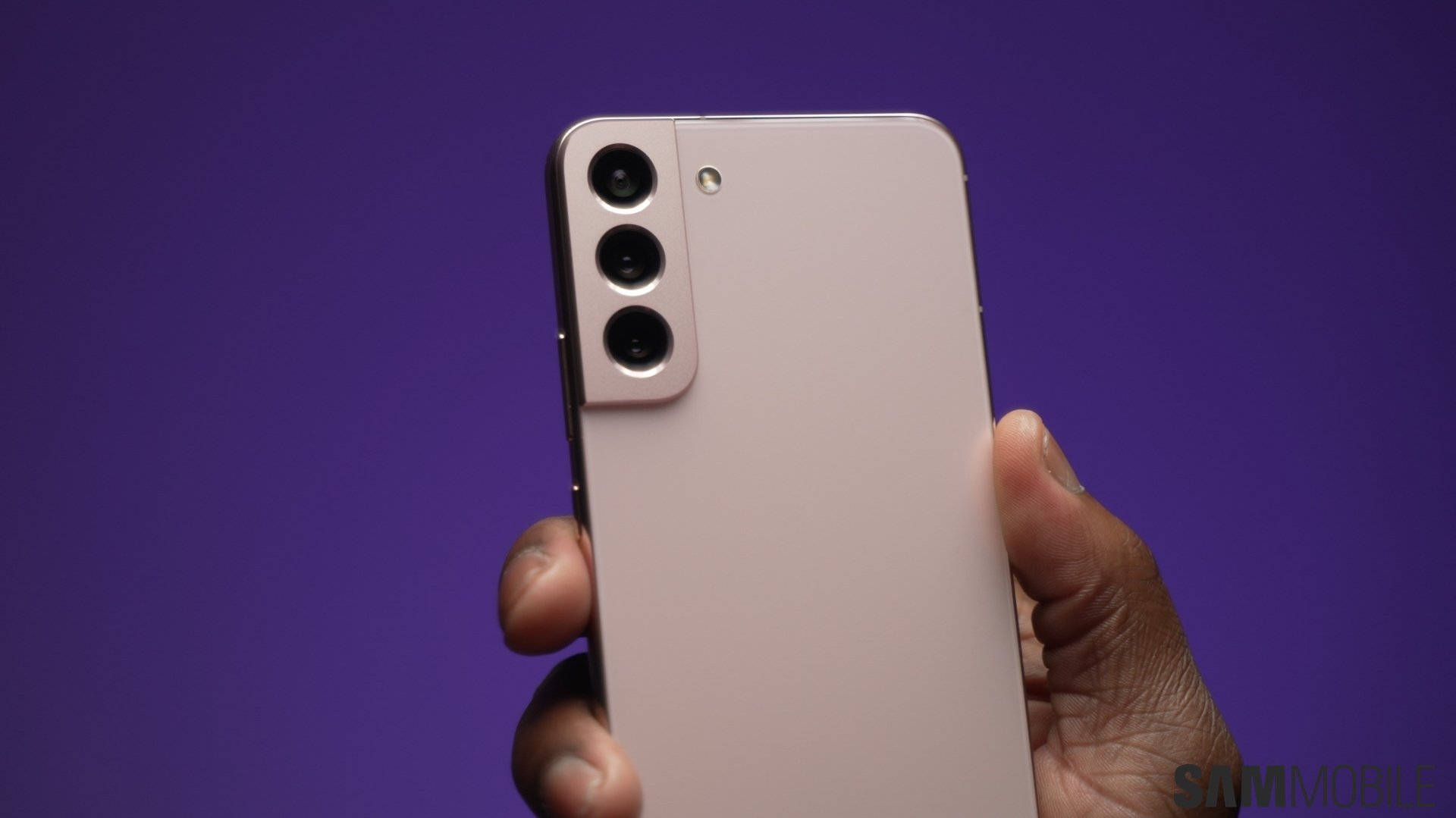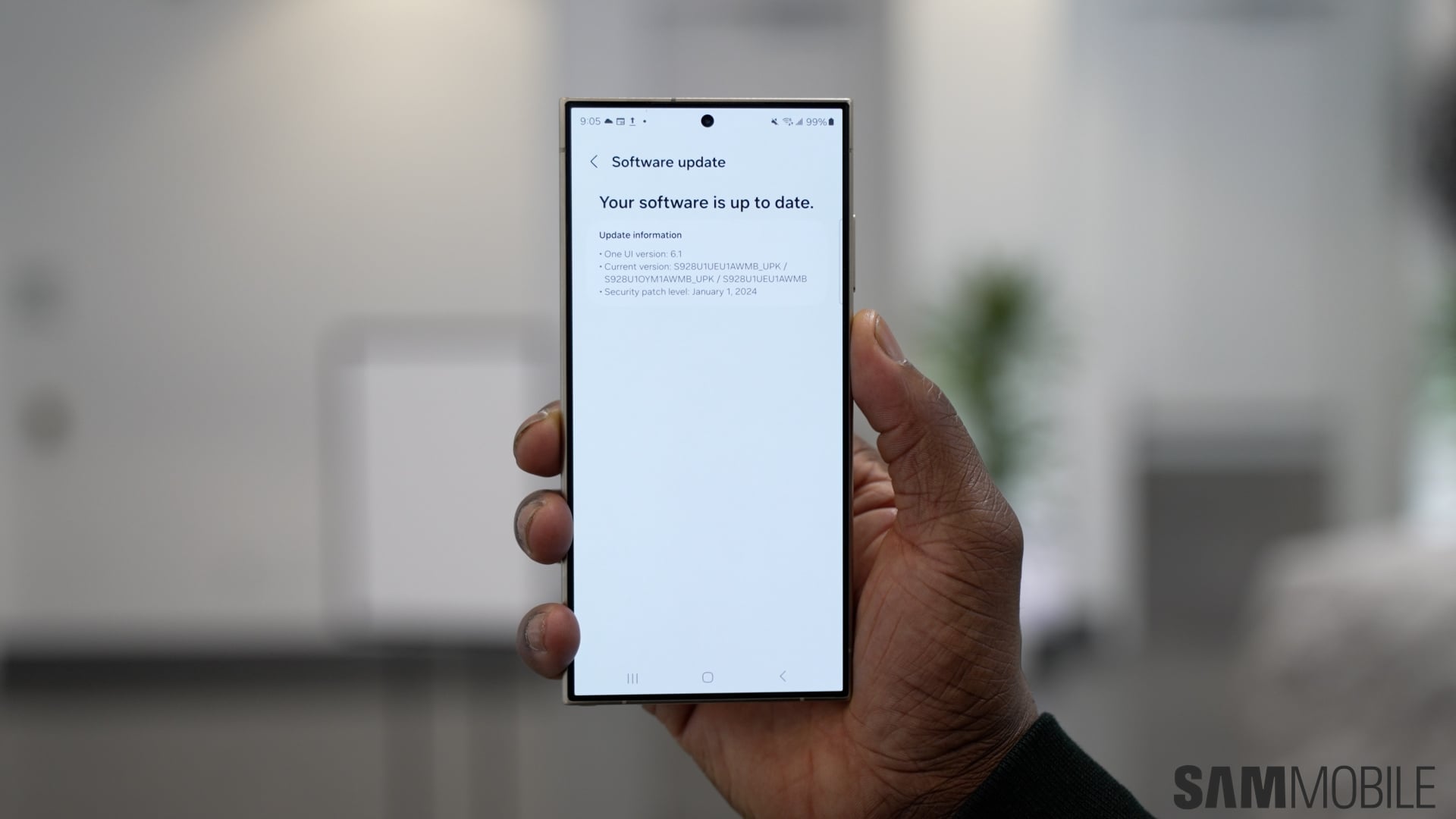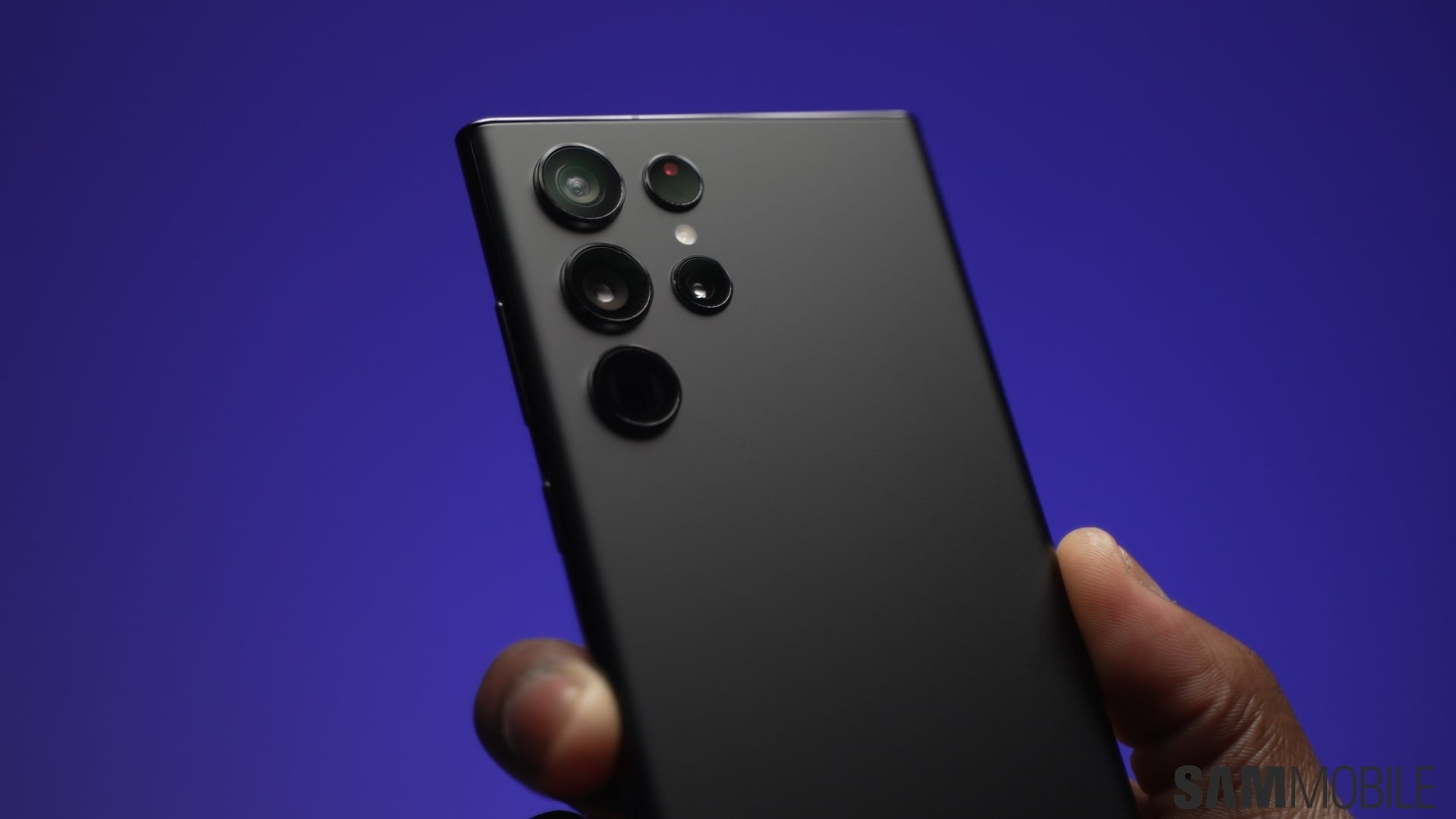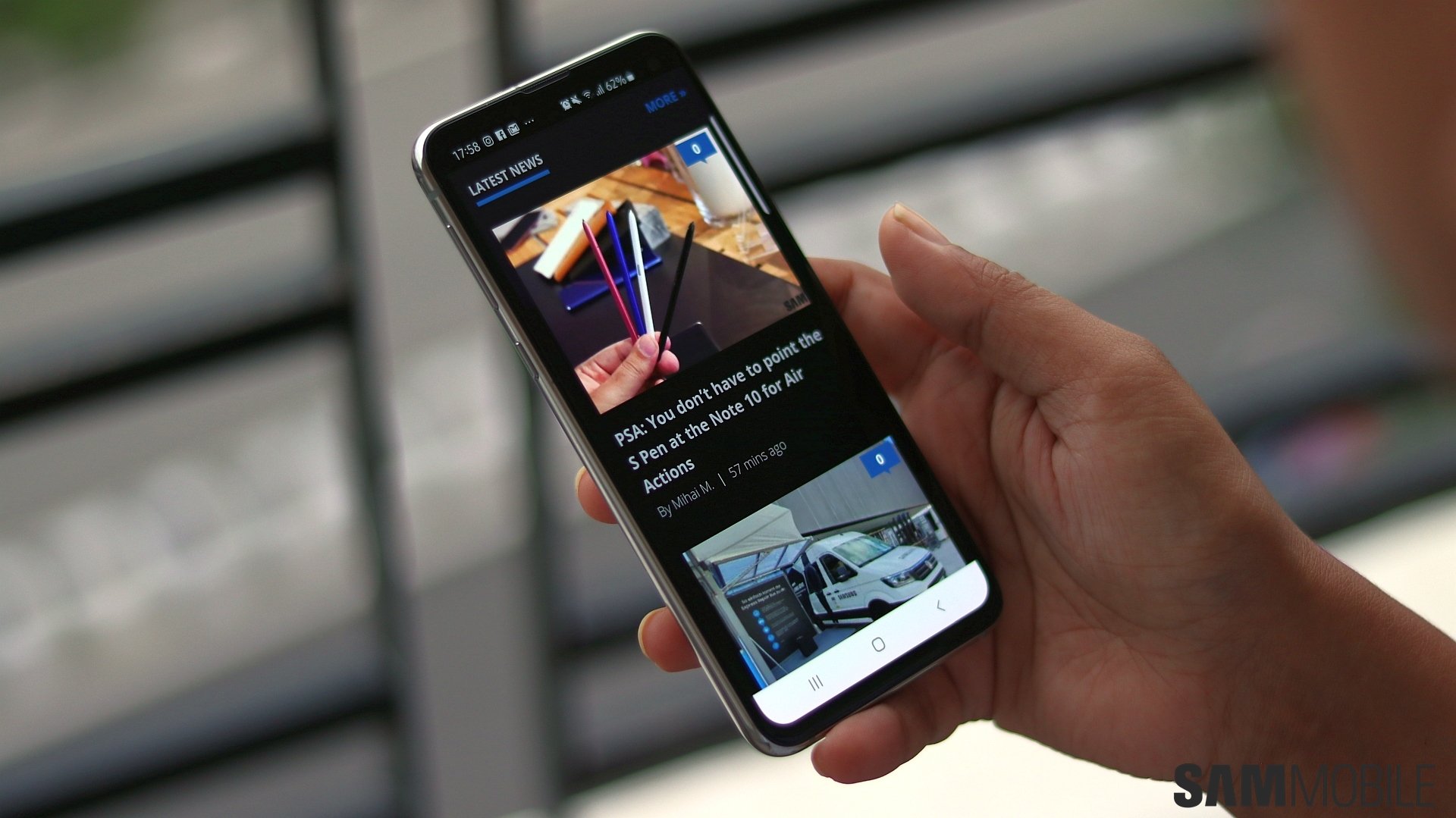
Introduction
Samsung has made significant changes to its Galaxy S lineup with the launch of the Galaxy S10 series. Up from the usual two in the previous generations, the company offers four different Galaxy S flagship models this year: Galaxy S10e, S10, S10+, and the S10 5G. Among them, the S10e is the entry-level flagship and differs substantially from its siblings.
The ‘e’ in the Galaxy S10e moniker supposedly stands for ‘essential.’ It is meant to convey that the Galaxy S10e has all the core features of its larger and more expensive siblings but sacrifices some of the extra bells and whistles to attain a lower price point. It is a compact flagship that looks unimpressive only when compared to the other Galaxy S10 models. On its own, it’s a compelling offering that gets all the smartphone “essentials” right.
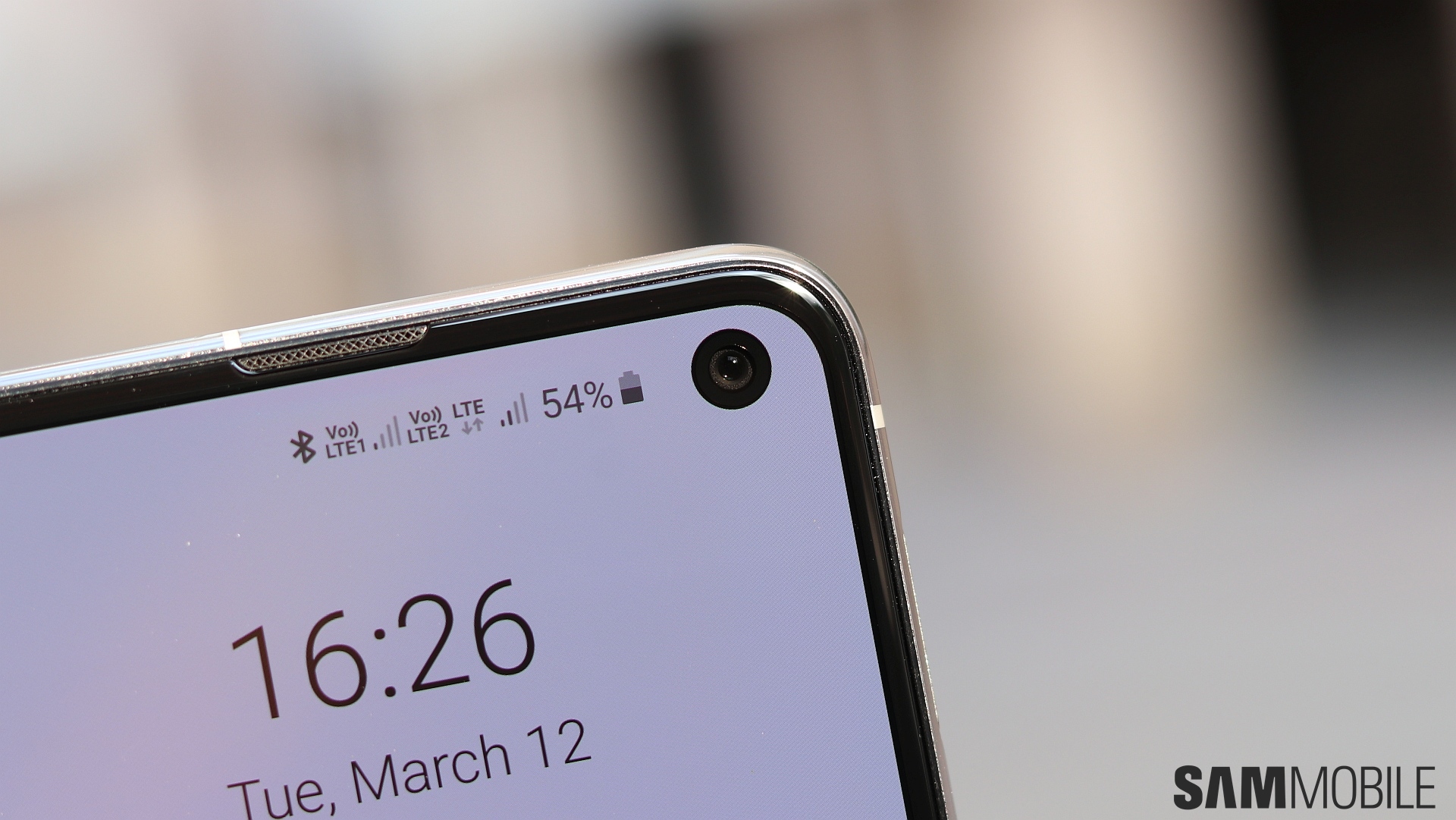
Design
The Galaxy S10e looks noticeably different from the other S10 variants, and it’s primarily due to its flat display as opposed to the curved panels usually seen on the Galaxy flagships. Thanks to the small Infinity-O display that stretches from edge to edge, the S10e is a compact device and easy to operate with one hand. In line with the Infinity-O branding, there is a small and circular cut-out in the top-right corner of the display for the selfie camera. To make the bezels and camera punch-hole smaller, Samsung had to remove the notification LED, which some may find inconvenient.
Unlike the other Galaxy S10 variants, the S10e doesn’t come with an in-display fingerprint reader. Instead, the biometric option is integrated into the power button on the right side of the device. On the left, there is a volume rocker and a Bixby button. Down below, there is a headphone jack, primary microphone, USB Type-C port, and a speaker grille, leaving the SIM slot and the secondary mic at the top. The backside of the device is clean with only a horizontally-placed dual-camera system and an LED flash.
It is made out of glass and metal, giving it a premium look and feel. It has Corning Gorilla Glass 5 protection on the front and the back, while its larger siblings come with the newer Gorilla Glass 6 on the front. The device measures 142.2 x 69.9 x 7.9 mm and weighs 150 grams.
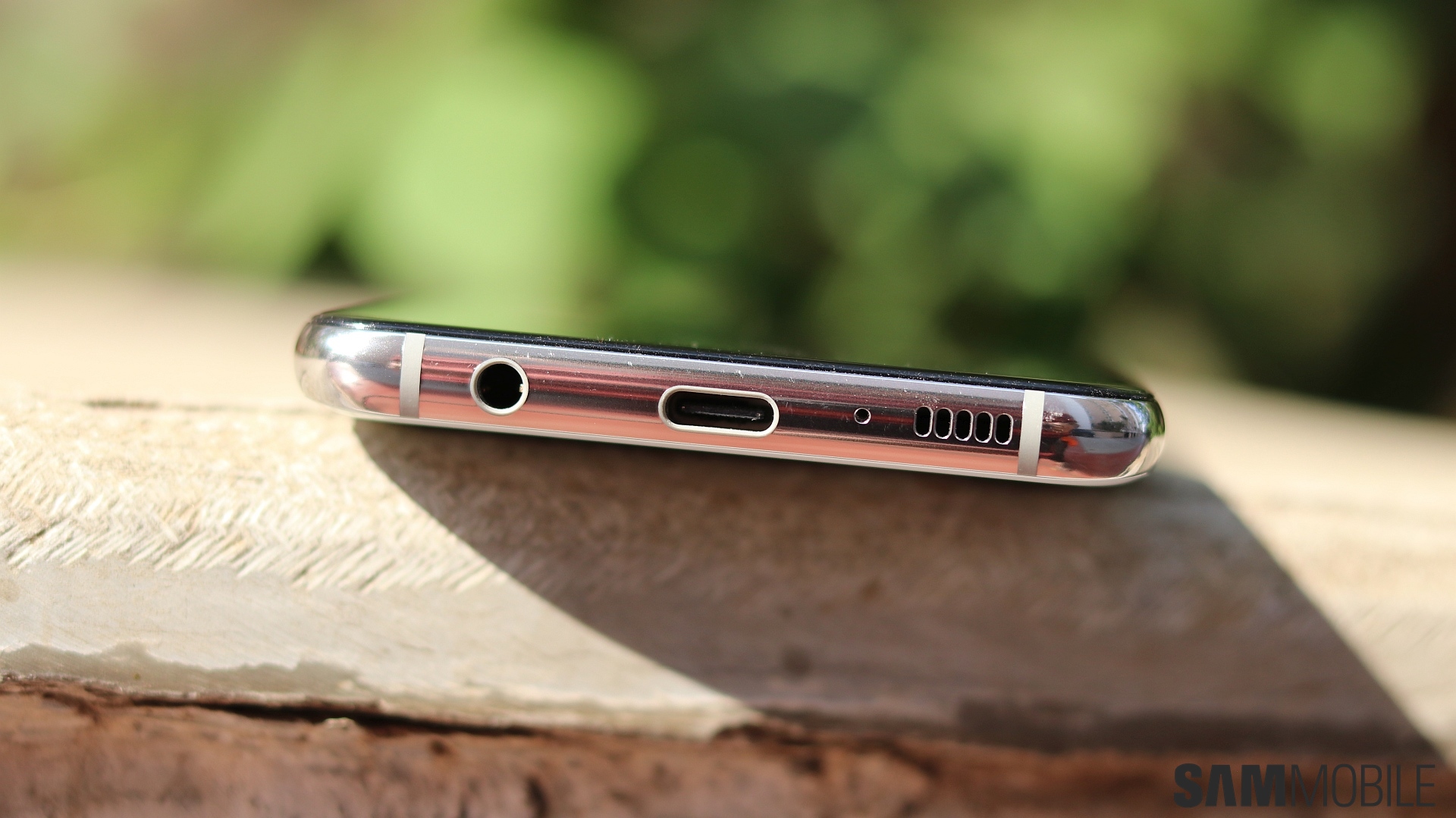
Specifications
The Galaxy S10e comes with a 5.8-inch Dynamic AMOLED Infinity-O display, Exynos 9820 Octa SoC with Mali-G76 MP12 GPU or Qualcomm Snapdragon 855 with Adreno 640 GPU (depending on the region), 6GB RAM with 128GB or 256GB internal storage, microSD support, dual-camera system on the back, single selfie shooter on the front, AKG-tuned stereo speakers, USB Type-C 3.1 port, Samsung Pay with MST, IP68 certification, 3,100mAh battery with fast wired and wireless charging up to 15W, Wi-Fi 6, reverse wireless charging, and more. It runs on Android 9 Pie-based Samsung One UI out of the box. Currently, the device is on the February security patch.
You can find the complete list of specifications on our Galaxy S10e page here.
Display
Display size is one of the major differences between the various Galaxy S10 models, and the S10e has the smallest and the lowest-resolution display of all. It is also the only Galaxy S10 model and the first Galaxy S flagship since the Galaxy S7 to come with a flat display. The S10e has a 5.8-inch Dynamic AMOLED Infinity-O display that stretches from edge-to-edge even without the curves. The display has a small, circular cut-out on the top-right for the selfie camera, which looks far less obtrusive than the dual-camera cut-out on the S10+.
It’s an FHD+ panel with a pixel density of ~438 PPI, making it, theoretically, the least sharp among all the Galaxy S10 variants and the only Galaxy flagship display since the S6 series with less than Quad HD resolution. Yet, thanks to a host of improvements made by Samsung, it is one of the best smartphones displays in the market in terms of quality, which should make all these numbers irrelevant in everyday usage. Samsung says it’s the first HDR10+-certified smartphone display, promising vibrant colors. It also comes with dynamic tone mapping for increased color accuracy.
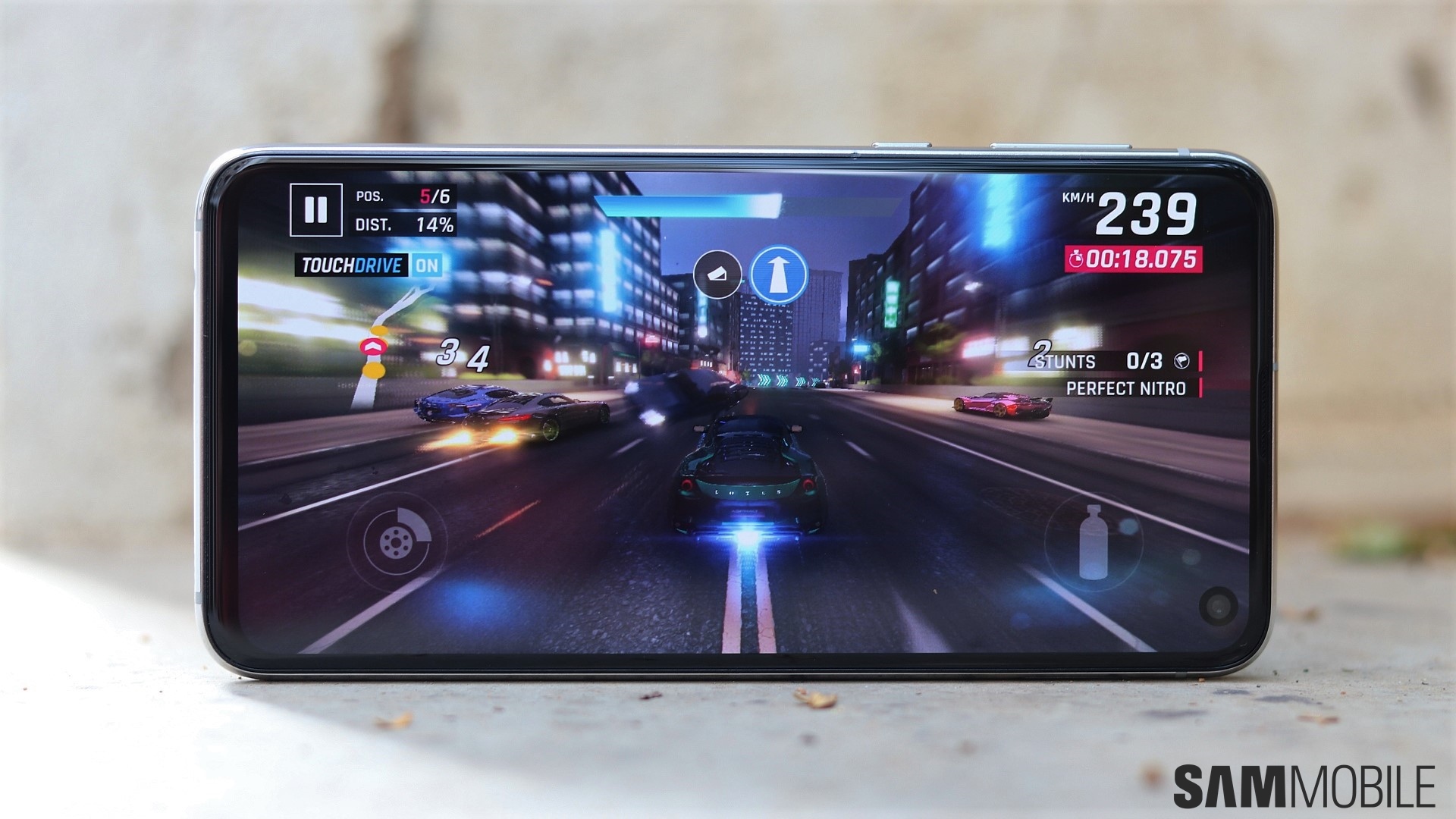
Cameras
Camera hardware is another key differentiating factor among all the Galaxy S10 models. While the primary selfie and rear cameras remain unchanged across the lineup, Samsung has added additional cameras on the back and the front to create a hierarchy within the series. Being the entry-level flagship, the S10e has the least number of cameras among its siblings with a total of three shooters – two on the back and one on the front.
The dual-camera setup on the Galaxy S10e consists of a 12MP f/1.5-2.4 Dual Aperture primary lens with PDAF and OIS and a 16MP F2.2 ultra-wide lens with a 123-degree FOV. The rear cameras can shoot Super Slow-mo, Hyperlapse, and HDR10+ videos. On the front, the compact flagship comes with a 10MP f/1.9 Dual Pixel autofocus camera which, for the first time, brings 4K recording capabilities to a Galaxy device’s selfie camera.
All these cameras are identical to those on the S10 and S10+, except that the regular S10 also has a telephoto lens on the back and its larger sibling adds both a rear telephoto lens and a selfie depth-sensor to the mix.
On the software front, the Galaxy S10 camera features and UI are the same across all models. The new flagships come with a dedicated Instagram mode in the main camera, new AR Emoji features and improvements, Scene Optimizer enhancements, Flaw Detection feature, etc.
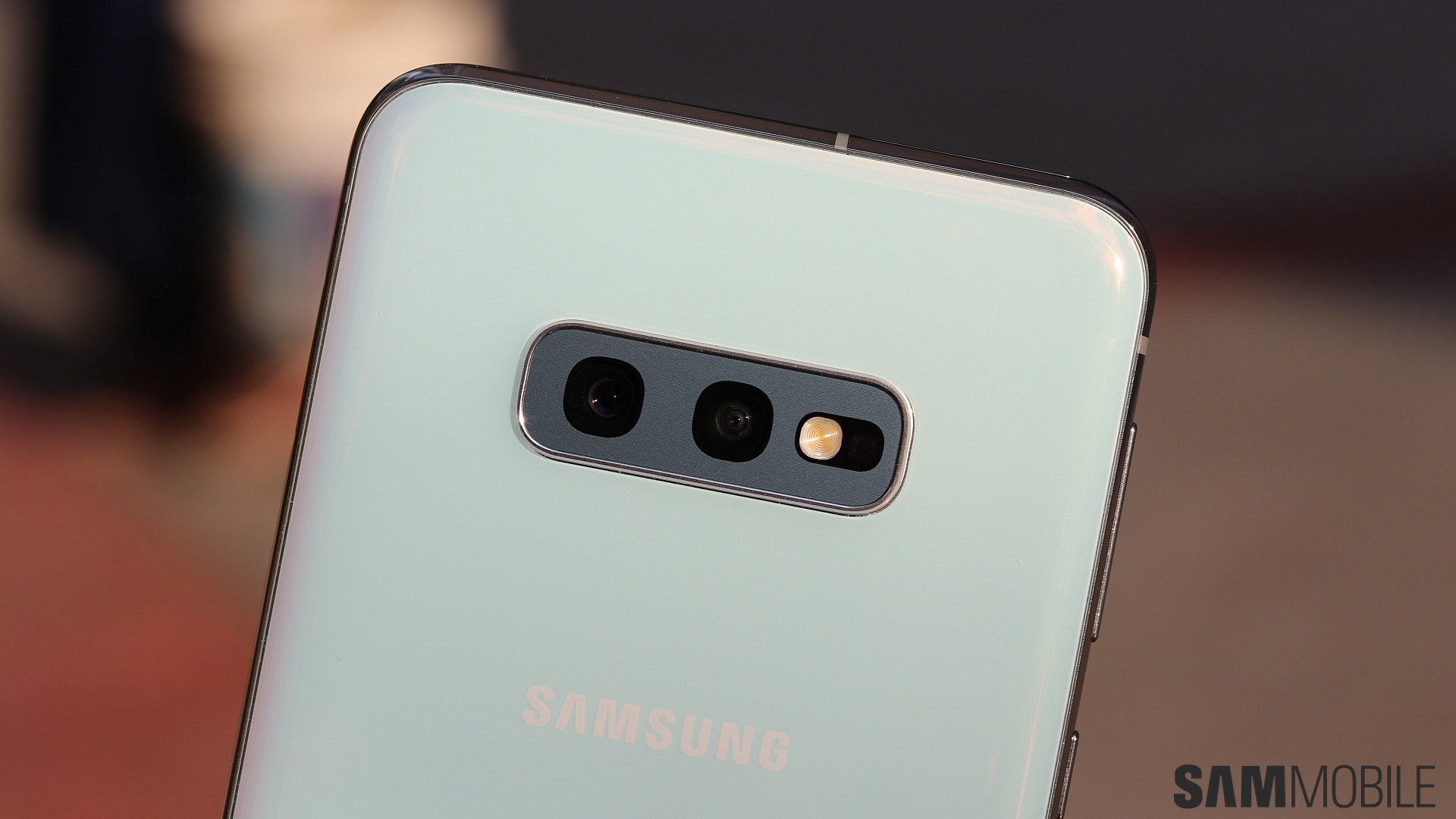
Software
On the software front, the Galaxy S10 series doesn’t bring anything new to the table. It runs Android 9 Pie out of the box with Samsung’s One UI 1.1 on top, which is a minor incremental update to the One UI 1.0 on other Samsung devices like the Galaxy S9/S9+, Note 9, etc. Digital Wellbeing and Bixby Routines are the only two major new additions here. Rest of the software experience here is similar to the other Galaxy devices with One UI.
Digital Wellbeing aims to reduce smartphone addiction by providing better usage insights and tools to control usage habits. It’s not a Samsung feature but an Android 9 Pie feature from Google. Bixby Routines are Samsung’s version of IFTTT that helps users to automate many mundane and repetitive actions on their smartphones. While it’s not as exhaustive or powerful as Tasker or IFTTT, it has enough potential to appeal to the users who never tried such automation tools before. You can read more about the Bixby Routines here.
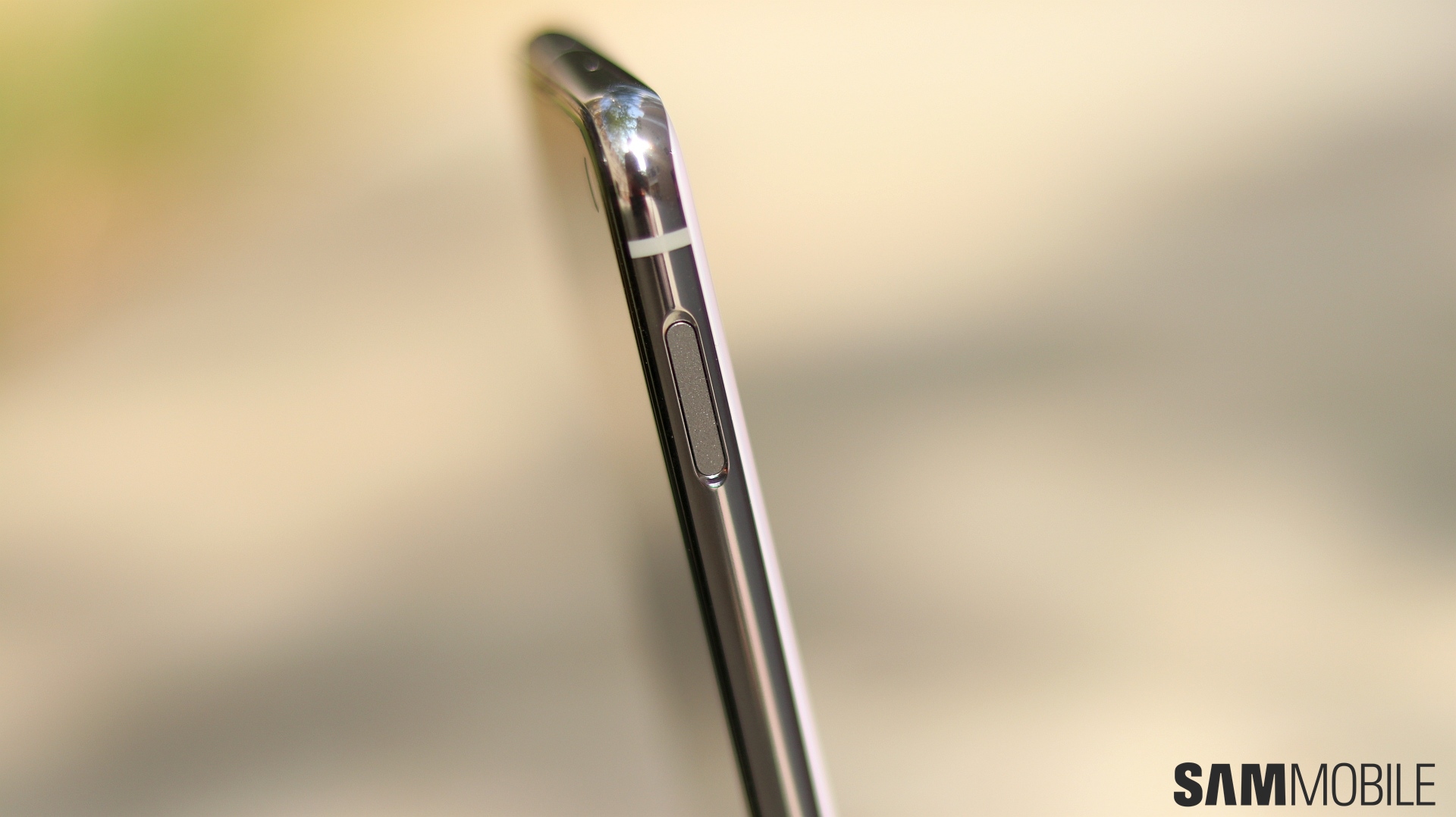
Availability
Samsung launched the Galaxy S10 series on February 20 at the Unpacked 2019 event in San Francisco. The new flagships were up for pre-order the next day in many markets around the world and went on sale in more than 70 countries on March 8. Samsung offered Galaxy Buds for free or at a heavily discounted price for those who pre-ordered the Galaxy S10 in select markets.
The Galaxy S10e comes in 6GB/128GB and 8GB/256GB storage variants, priced at $749 and $849, respectively, for the unlocked variants in the US. Pricing may vary depending on the region and the carrier. The S10e comes in Prism White, Prism Black, Prism Green, Prism Blue, Canary Yellow, and Cardinal Red (in select markets) color options.












